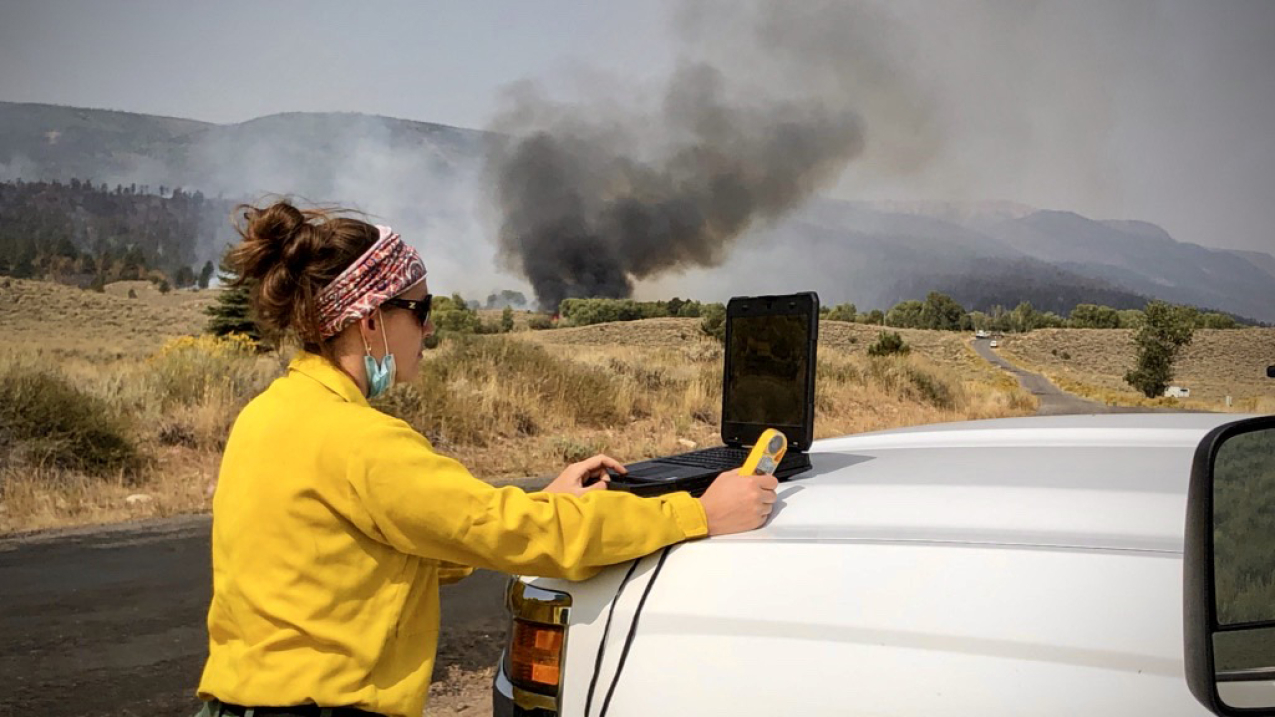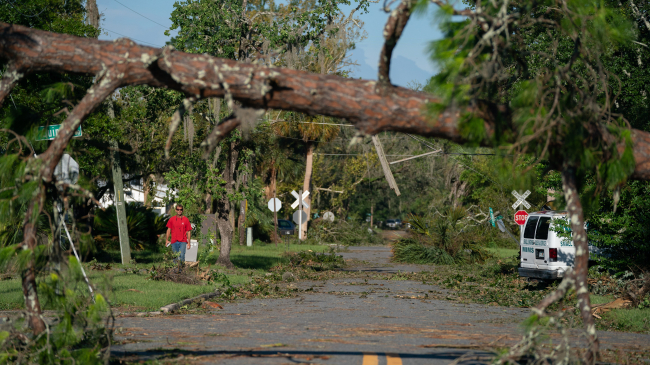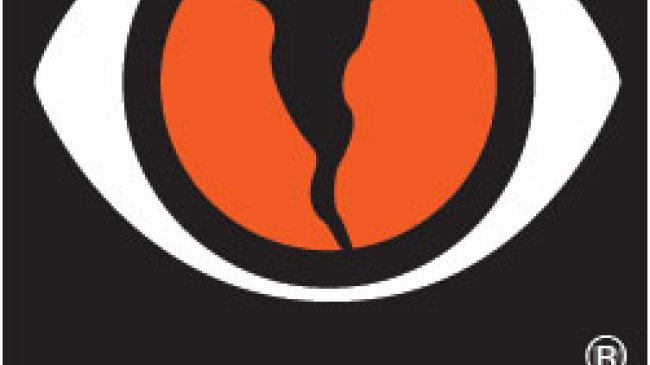Fire weather training sharpens skills, ensures IMET readiness to provide for firefighter safety

IMET Lisa Kriederman uses a portable weather station to gather observations to support wildfire suppression at the Pine Gulch Fire north of Grand Junction, CO, August 2020. In addition to fire suppression forecasts, IMETs issue timely site-specific forecasts of weather conditions possibly hazardous to crews on the fire line. Weather fronts can change wind speed and direction; dry thunderstorms can cause downbursts, erratic wind conditions and dangerous lightning that can cause additional fires. Wind, humidity and temperatures near fires have significant effect on fire intensity and firefighting tactics. (Image credit: NOAA)




